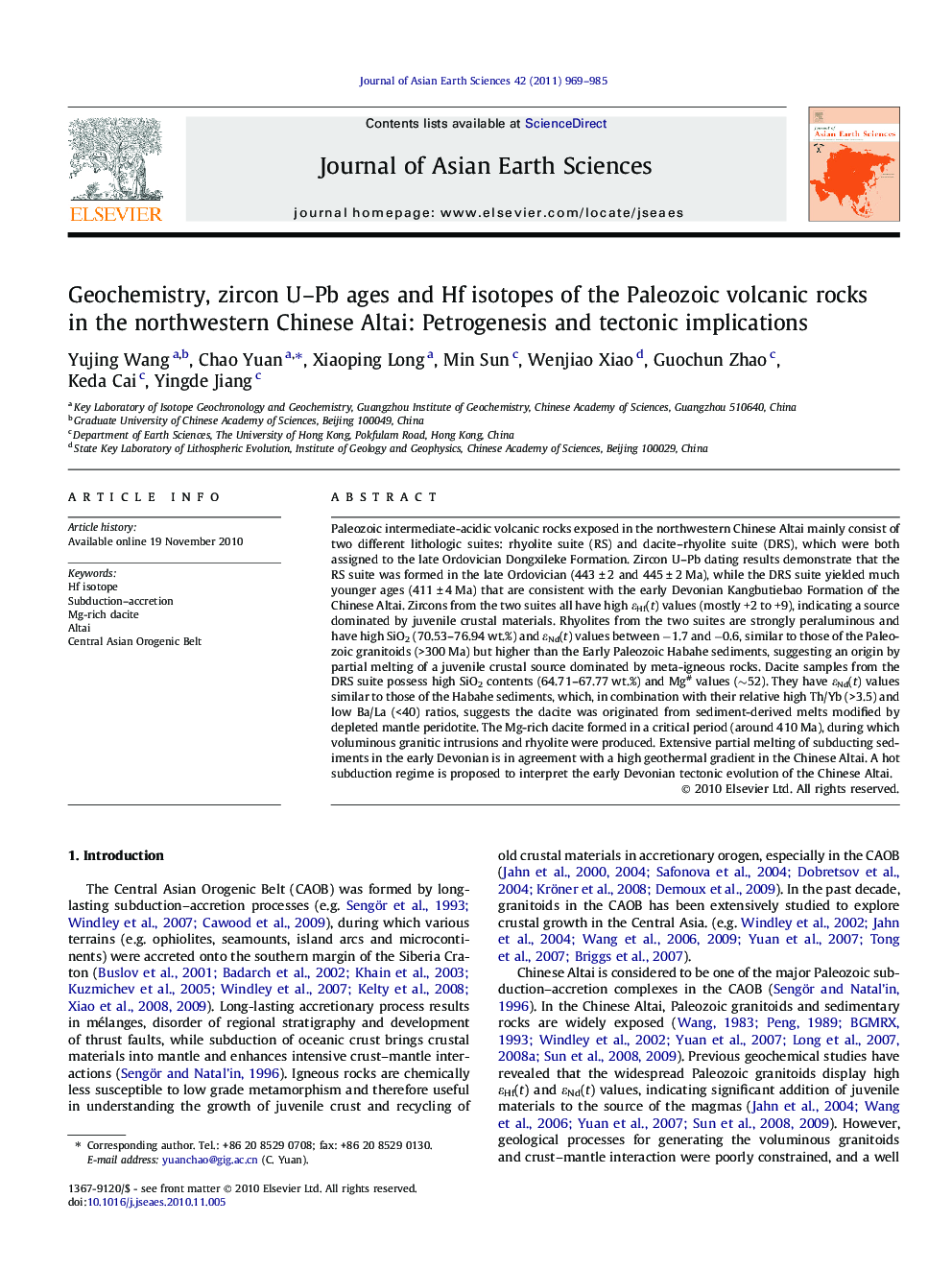| کد مقاله | کد نشریه | سال انتشار | مقاله انگلیسی | نسخه تمام متن |
|---|---|---|---|---|
| 4731725 | 1356818 | 2011 | 17 صفحه PDF | دانلود رایگان |

Paleozoic intermediate-acidic volcanic rocks exposed in the northwestern Chinese Altai mainly consist of two different lithologic suites: rhyolite suite (RS) and dacite–rhyolite suite (DRS), which were both assigned to the late Ordovician Dongxileke Formation. Zircon U–Pb dating results demonstrate that the RS suite was formed in the late Ordovician (443 ± 2 and 445 ± 2 Ma), while the DRS suite yielded much younger ages (411 ± 4 Ma) that are consistent with the early Devonian Kangbutiebao Formation of the Chinese Altai. Zircons from the two suites all have high εHf(t) values (mostly +2 to +9), indicating a source dominated by juvenile crustal materials. Rhyolites from the two suites are strongly peraluminous and have high SiO2 (70.53–76.94 wt.%) and εNd(t) values between −1.7 and −0.6, similar to those of the Paleozoic granitoids (>300 Ma) but higher than the Early Paleozoic Habahe sediments, suggesting an origin by partial melting of a juvenile crustal source dominated by meta-igneous rocks. Dacite samples from the DRS suite possess high SiO2 contents (64.71–67.77 wt.%) and Mg# values (∼52). They have εNd(t) values similar to those of the Habahe sediments, which, in combination with their relative high Th/Yb (>3.5) and low Ba/La (<40) ratios, suggests the dacite was originated from sediment-derived melts modified by depleted mantle peridotite. The Mg-rich dacite formed in a critical period (around 410 Ma), during which voluminous granitic intrusions and rhyolite were produced. Extensive partial melting of subducting sediments in the early Devonian is in agreement with a high geothermal gradient in the Chinese Altai. A hot subduction regime is proposed to interpret the early Devonian tectonic evolution of the Chinese Altai.
Research highlights
► Paleozoic intermediate-acidic volcanic rocks in the northwestern Chinese Altai mainly erupted at ∼440 Ma and 410 Ma, respectively.
► Rhyolites from the volcanic rocks were derived from a source dominated by juvenile crustal materials.
► The Mg-rich dacite was originated from sediment-derived melts modified by depleted mantle peridotite.
► The Chinese Altai was in a hot subduction regime during the early Devonian.
Journal: Journal of Asian Earth Sciences - Volume 42, Issue 5, 10 October 2011, Pages 969–985